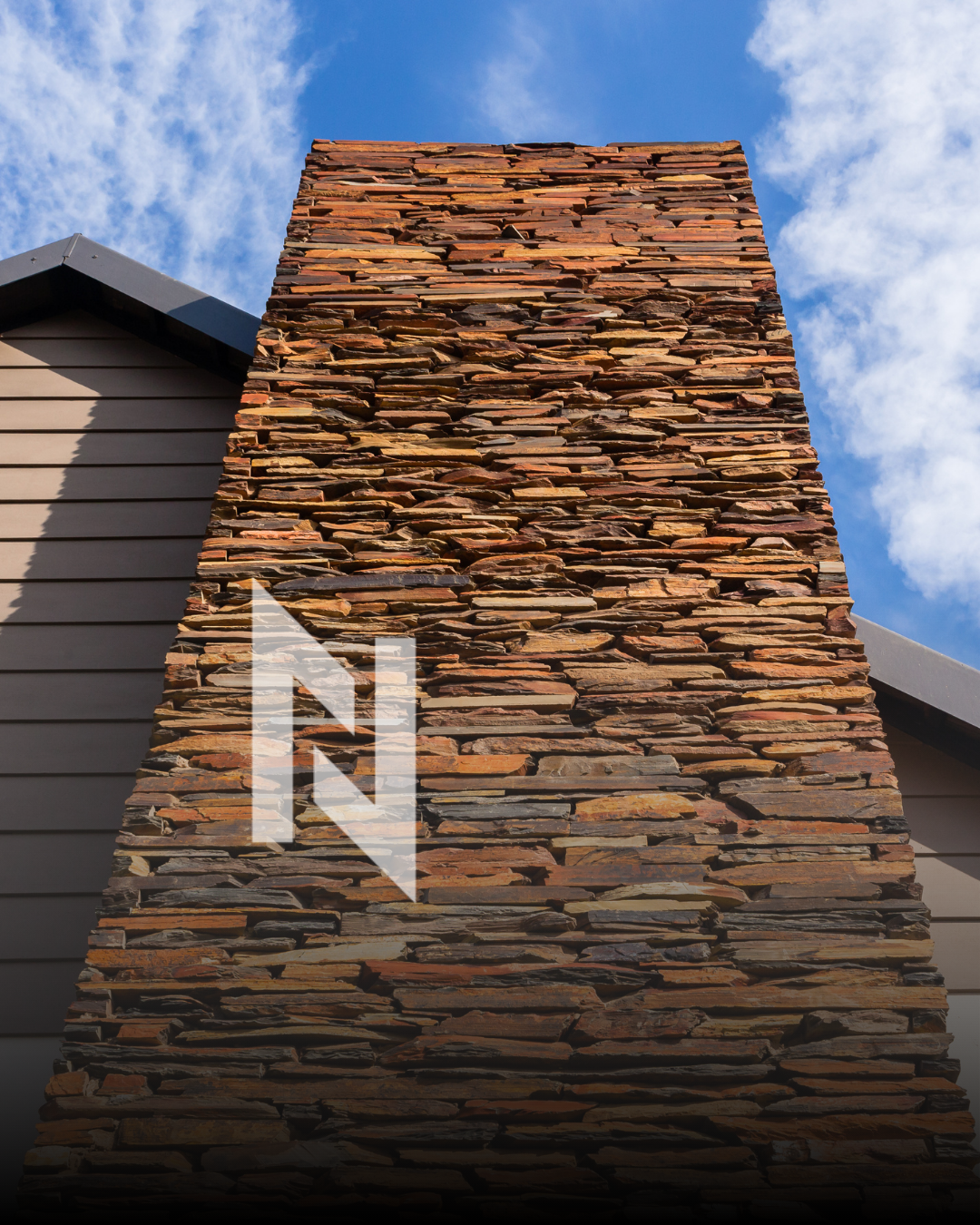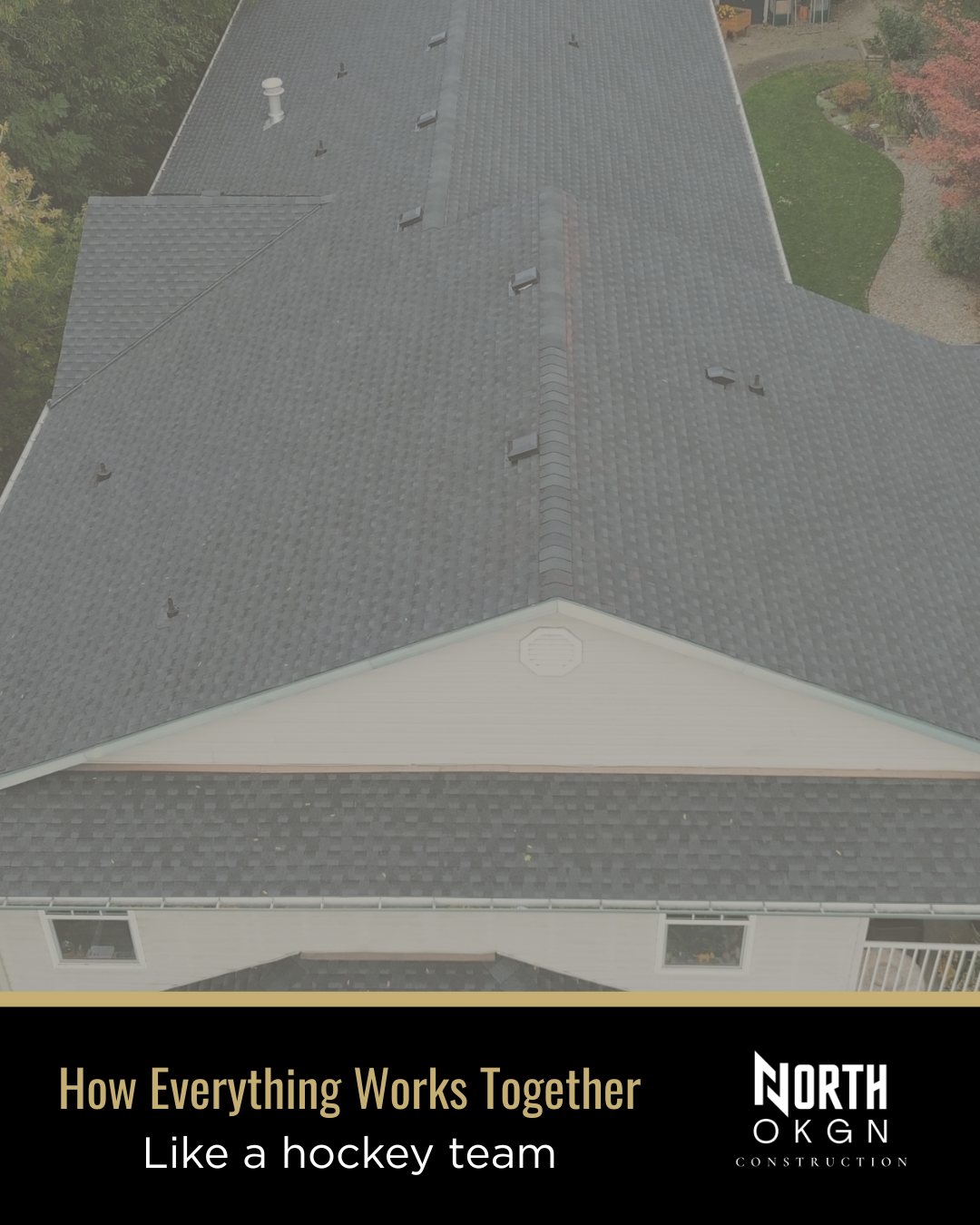Chimney Crickets: Small Feature, Big Protection for Your Roof

🧱 Chimney Crickets: Small Feature, Big Protection for Your Roof
Introduction: The Unsung Hero Behind Your Chimney
Most homeowners don’t think much about the space behind their chimney - until there’s a mysterious water stain on the ceiling and a roofer says, “You might need a cricket.” 🦗
No, it’s not the kind that chirps at night. A chimney cricket (also often called a chimney saddle) is a small, peaked structure built on the uphill side of your chimney. And while it might not look like much, it plays a huge role in keeping your roof and your home dry.
At North OKGN Construction, we’ve seen firsthand how this simple feature can prevent thousands of dollars in water damage. Let’s dive into what a chimney cricket is, why it matters, and how it helps protect homes here in the North Okanagan’s unique climate.
What Is a Chimney Cricket?
A chimney cricket is essentially a mini-roof for your chimney. It’s a small, ridged structure built on the high side (the part facing up the roof slope) of the chimney to divert rain, snow, and debris away from the base.
Crickets are typically framed from wood and then covered in the same roofing material as the rest of the roof whether that’s asphalt shingles, metal, or other materials so they blend right in. The result? A seamless, protective bump that keeps water moving where it should go: off your roof.
Why Are Chimney Crickets Important for Your Roof?
Without a cricket, rainwater and melting snow naturally collect behind your chimney, especially during Vernon’s wet spring or when snow melts off in early March. That pooling water slowly seeps into seams, flashings, and decking.
Over time, that can cause:
- Leaks and staining inside your home
- Rotting roof decking and framing
- Premature shingle deterioration
- Mold and mildew growth
Installing a chimney cricket is like giving your chimney a raincoat that actually fits. It keeps your home dry, your structure solid, and your roof looking its best for years longer.
How Do Chimney Crickets Work?
Think of how a tent sheds water, angled surfaces guide it down and away. A chimney cricket works the same way.
It creates a gentle peak where water would normally pool, splitting the flow to both sides of the chimney. From there, gravity takes over and the water continues down your roof, directly toward your gutters.
For maximum protection, your cricket should integrate with your flashing system (the metal seals around your chimney) to ensure there are no weak spots. When installed properly, it’s one of those features you’ll never notice because it’s quietly doing its job every single day.
Problems That Can Occur If You Don’t Have a Chimney Cricket
Skipping a chimney cricket might seem like a small cost-saving choice...until you’re calling a roofer in the middle of a Vernon rainstorm.
Here’s what can happen if your chimney is left unprotected:
- Pooling Water – The flat area behind a chimney becomes a natural catch basin. Constant moisture leads to rot and structural weakening.
- Leaks & Interior Damage – Water finds even the tiniest gaps, often appearing inside as stains on ceilings or bubbling paint near the chimney wall.
- Shingle Deterioration – Standing water shortens the lifespan of shingles and underlayment.
- Ice Dams – In winter, melting snow refreezes overnight, creating a dam that pushes water under shingles and into your attic.
- Pest Access – Damp wood and open gaps invite ants, wasps, and even small critters looking for shelter.
In short, skipping a cricket today could cost you a waterfall in your living room tomorrow.
What Types of Roofs Require a Chimney Cricket?
Building codes typically recommend a cricket when a chimney is 30 inches or wider on the side facing up the roof slope. But size isn’t the only factor—climate and roof pitch matter too.
- Steeper Roofs: They shed water faster, but in heavy rain or snow (hello, North Okanagan winters), water can still build up behind a wide chimney.
- Low-Slope Roofs: These almost always need a cricket, since water drains more slowly.
- Metal Roofs: Crickets help maintain the flow of snow and ice, preventing buildup that can damage panels or seams.
Even if it’s not technically required, a cricket is one of those “ounce of prevention, pound of cure” additions we often recommend for long-term peace of mind.
Chimney Cricket vs. Flashings: What’s the Difference?
This is a common question from homeowners, and it’s an important one. Both play key roles, but they do very different things:
- Flashings seal joints and transitions (where your roof meets your chimney, walls, or vents) to prevent water from entering.
- Chimney Crickets redirect water before it even reaches those vulnerable areas.
Think of it like this: flashings are your boots, keeping your feet dry once you’re in the puddle; a cricket is your umbrella, helping you avoid the puddle in the first place.
When both are installed correctly, your chimney area becomes one of the most watertight parts of your roof instead of one of the most leak-prone.
Wrapping It Up: Protecting Your Home from the Top Down
A well-built chimney cricket is a small investment that pays off big time in roof longevity, home protection, and peace of mind.
At North OKGN Construction, we’re proud to help homeowners across Vernon and the North Okanagan protect their roofs from the elements, whether that’s rain, snow, or the occasional hockey-puck-sized hail (it’s the Okanagan, after all).
If you’re not sure whether your chimney has a cricket or you’ve noticed water marks or ice buildup near your chimney, don’t wait until it becomes a bigger issue.
👉 Call or text 250-550-6432 to schedule your roof inspection.
Because sometimes, the smallest details make the biggest difference in keeping your home safe and dry.


















